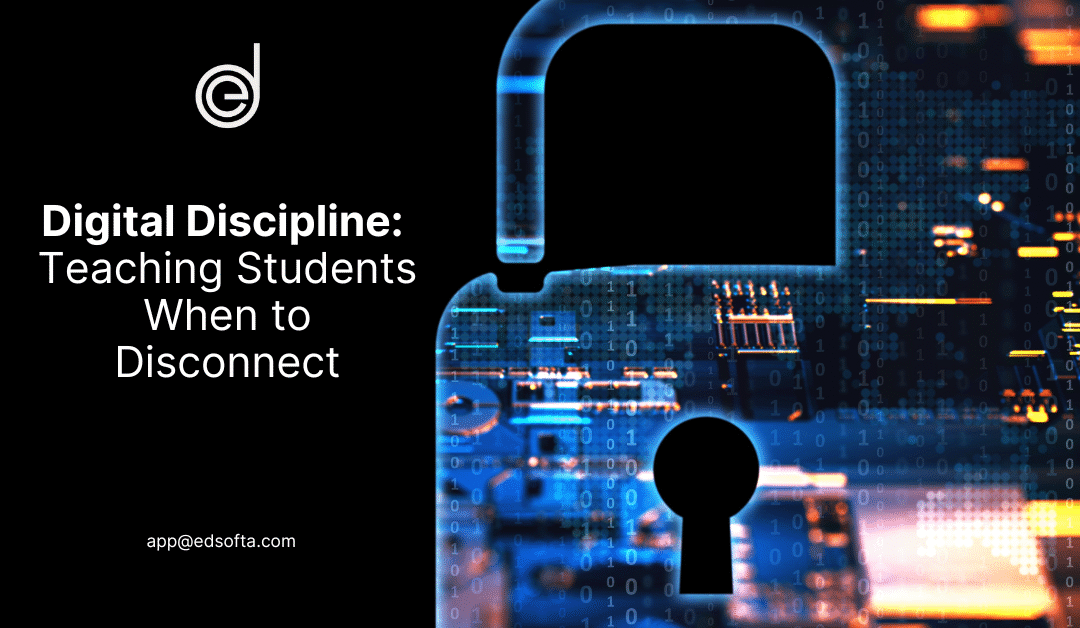Digital discipline is no longer just a good idea; it’s a necessary skill in the modern classroom. From online classes to YouTube tutorials and endless scrolling on TikTok, students are more connected to screens than ever before. But as the digital world becomes more embedded in education, the ability to know when to disconnect becomes just as important as knowing how to use tech tools effectively.
Many school owners and educators are now asking the same question: “How do we help our students focus and stay productive in a world full of digital distractions?”
The answer begins with digital discipline.
Why Breaks from Screens Matter

Let’s face it, students don’t just use devices for learning. They use them for chatting, gaming, scrolling, and streaming. When screens are constantly in front of them, it can lead to mental fatigue, burnout, and even reduced learning capacity.
Studies show that long hours of uninterrupted screen time can lead to reduced memory retention and decreased attention span. That’s why taking short tech breaks is powerful.
Even a 5–10-minute break to stretch, close their eyes, or take a walk can help students return to their studies with improved concentration. This isn’t just about “switching off” for the sake of it, it’s about letting the brain breathe.
For school owners, incorporating screen-free breaks between long digital lessons can help create a more balanced classroom experience. Whether physical or virtual, students need moments to rest their minds.
How to Set Healthy Digital Boundaries
Digital discipline doesn’t mean banning devices. It’s about helping students make smarter decisions with their tech use.
Here are practical ways students can build discipline around digital learning:
1. Use Study-Specific Screen Times
Encourage students to dedicate specific times of the day strictly to studying. For example, 4–6 pm could be their “focus time.” During this window, only educational tools and platforms are allowed. Once the session is over, they can return to recreational screen use.
2. Use Timers for Breaks
The Pomodoro technique (25 minutes of study, 5 minutes of rest) is a great way to maintain attention. Using apps like Focus Keeper or simple phone timers can train students to take purposeful breaks without drifting into distraction.
3. Balance Online with Offline
Encourage students to print out notes or read from physical textbooks sometimes. Offline reading helps their eyes rest, reduces screen fatigue, and gives them a break from passive scrolling.
As a school owner, you can promote these habits by setting guidelines during study hours or integrating them into your school’s digital learning policy.
Learning Also Happens Offline

Here’s a truth that can’t be ignored: some of the best learning doesn’t happen in front of a screen.
Take group discussions, for instance. Whether it’s peer-to-peer teaching or guided debates, offline interaction builds:
- Critical thinking
- Clear communication
- Improved concept retention
Let’s say your students are learning a topic like the water cycle. A 20-minute discussion session where they explain it to each other can be far more impactful than watching a video silently.
What’s more? Offline learning helps students develop confidence and leadership skills they’ll carry long after school. As a school owner, providing dedicated non-screen learning time every day can foster better engagement and higher performance.
Digital Discipline Builds Long-Term Success

Building digital discipline in your students doesn’t just help them in school; it sets them up for life.
When students learn how to manage their digital habits, they:
- Become more productive
- Sleep better
- Communicate more intentionally
- Develop a healthier relationship with technology
In an age where information is always just one click away, learning when not to click is a superpower.
How Can You Help Your Students Unplug?
Start with small actions.
- Create a blended learning environment with both online and offline materials
- Schedule structured screen breaks during lessons
- Offer lessons on digital wellness and responsible device use
- Encourage reflection: Ask students how they feel after screen-heavy days versus screen-light ones
You can also involve parents. Send home simple guides on building screen boundaries at home, or host a workshop on digital balance.
Let’s Raise Digitally Disciplined Learners

Technology is not the enemy; it’s a powerful ally. But like every tool, it must be used wisely. As educators and school administrators, our job is not to ban technology, but to teach students how to manage it effectively.
Digital discipline is a 21st-century survival skill. When we teach our students to disconnect with purpose, we help them connect more meaningfully, with their minds, with each other, and with their learning.
So, the next time your student asks for another hour of screen time, ask them this: “What are you gaining from it?” And more importantly, “What are you losing?”
Let’s help students establish a healthier digital rhythm, one that balances focus and freedom.




